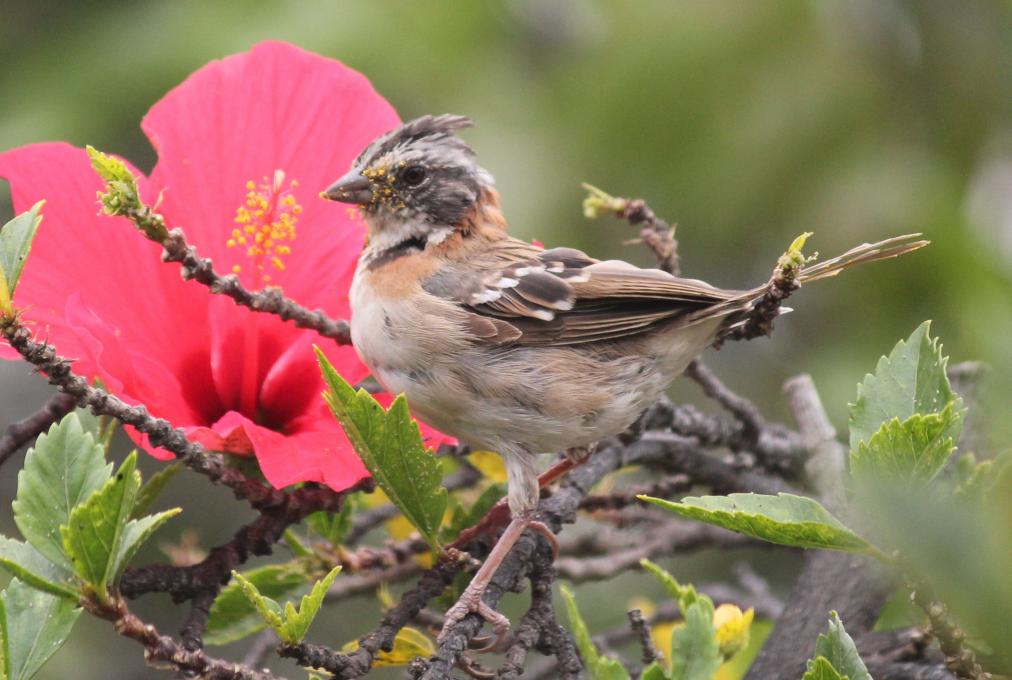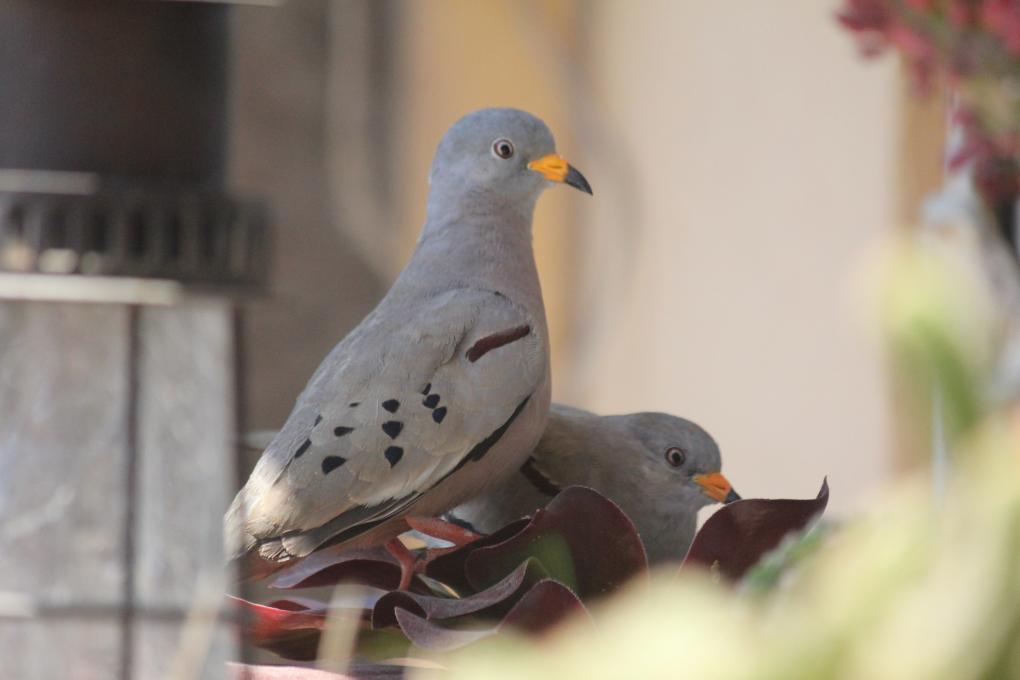Yulia
Forum Replies Created
Viewing 8 posts - 1 through 8 (of 8 total)
-
YuliaParticipantActivity 1: Birds are a world to me. I can’t even imagine waking up one morning and not hearing or seeing House Sparrows around. Everything in this world is connected. Knowing your neighbors is important. Birds can show if there are ecological problems around you. I feel we need more trees in our neighborhood, because the bird variety is poor. I’ve always wanted to expand my knowledge about these feathery creatures. Bird watching is so much fun! Activity 2: Just talking about birds, sharing books, pictures, videos or your personal observations can make others more bird conscious. From the seven actions there’s one I haven’t done yet – finding shade-grown coffee. I never thought of how coffee is grown until this course and I’m glad I can use my knowledge to help birds and be rewarded with delicious coffee. Activity 3: I think there are fewer birds in the cities than 10 years ago. From what I’ve read we are to blame. New building designs don’t allow nest building; only one type of grass seed used in city parks and lawns provides poor seed and insect diet for birds; there are less green areas and parks for birds to live, which also provides poor ecological environment for us. Activity 4: I’d like to know more about bird seasonal and gender behaviors, their feather color changes. Knowing about bird flight patterns and songs would make it easier for me to identify them. I really want to go to different parts of the country to see all the variety of birds I found in the books and applications. I even started a bird painting course that will help me to be more observant and notice more details in bird shapes, coloration and behaviors. I also signed up for the course Ornithology: Comprehensive Bird Biology. I'm really grateful for this course! Feels like a nice start of a great journey!in reply to: Activities: Helping Birds in Your World #731541
-
YuliaParticipantActivity 1: I take a lot of pictures and videos during my field trips. Then I analyze them calmly at home. I feel really overwhelmed with information and excitement and most likely miss on a lot of details during my bird watching. Pictures help to identify birds with the help of books and Merlin ID app. Songs captured in videos help to figure out birds that I couldn’t see or photograph. Activity 2: I joined a Facebook group and keep my eye open on any planned activity in the world of bird watching in our city. Last year I was lucky to meet authors of my 2 bird books. Talking to them was very inspiring!in reply to: Activities: Keeping Track of Your Birdwatching #731537
-
YuliaParticipantActivity 1: I decided to compare river mouth at the beach (aquatic habitat) and some bushes on the side of the road in the abandoned farm fields (scrub-shrub habitat). Aquatic habitat is full of visible and countable birds generally the size of a pigeon or bigger; waterfowl, wading birds and shore birds. With the help of a camera and Merlin ID application I could identify around 24 bird species. For example, comparing my picture of a bird in flight and pictures in Merlin app helped me figure out that my bird wasn’t a Franklin’s Gull, but an Andean Gull. Both birds are white with gray wings and black heads and both of them can be found at that place. The tips of its wings gave it away.
 On the other hand, scrub-shrub habitat experience was frustrating. A lot of swooshing shadows of birds the size of a sparrow or smaller. Even a prepared list of most likely birds to see in the area didn’t help much. I couldn’t spot them and had to rely a lot on my hearing. The problem was I didn’t recognize the sounds I heard. The number of bird species I could identify in a scrub-shrub habitat was 9. There were a lot of flying insects and insect eating birds, like Blue and White Swallow. I even spotted a raptor (American Kestrel) sitting on the cables. I also managed to capture a couple of bush residents.
On the other hand, scrub-shrub habitat experience was frustrating. A lot of swooshing shadows of birds the size of a sparrow or smaller. Even a prepared list of most likely birds to see in the area didn’t help much. I couldn’t spot them and had to rely a lot on my hearing. The problem was I didn’t recognize the sounds I heard. The number of bird species I could identify in a scrub-shrub habitat was 9. There were a lot of flying insects and insect eating birds, like Blue and White Swallow. I even spotted a raptor (American Kestrel) sitting on the cables. I also managed to capture a couple of bush residents.
 Sinereous Conebill
Sinereous Conebill
 Slender-Billed Finch
I need to do a better work on recognizing birds’ flight patterns and songs.
Activity 2:
I went as simple as ducks need lakes and woodpeckers need trees.
Down House: A big variety of Woodpeckers (woods or parks); Sevenoaks: Huge variety of Waterfowl (lakes).
Mt. Lemmon: Woodpeckers (woods or parks); Roger Road: Waterfowl (lakes). in reply to: Activities: Exploring Bird Habitats #730268
Slender-Billed Finch
I need to do a better work on recognizing birds’ flight patterns and songs.
Activity 2:
I went as simple as ducks need lakes and woodpeckers need trees.
Down House: A big variety of Woodpeckers (woods or parks); Sevenoaks: Huge variety of Waterfowl (lakes).
Mt. Lemmon: Woodpeckers (woods or parks); Roger Road: Waterfowl (lakes). in reply to: Activities: Exploring Bird Habitats #730268 -
YuliaParticipantActivity 1: A couple of Croaking Ground Doves was bringing dried plants and hairs (the type one might find inside a vacuum cleaner) on our movement light outside. Clearly they were trying to build a nest. It didn’t go very well since all their building material was falling down.
 Some other Croaking Ground Doves or Quiguaguas as they are called here were taking dust baths.
All About Birds looks like a website that can provide a lot of information on birds. I’m considering getting a monthly or yearly subscription.
Activity 2: I was observing birds from the Cornell Lab Feeder Cam in Supsucker Woods. Common Grackles came in a group of 7 and sort of scared 2 Red-Winged Blackbirds and 2 Mourning Doves. But these guys came back. Unlike Grackles that ate altogether, Mourning Doves didn’t let the 3rd Dove land on the feeder. Grackles, Doves and Blackbirds stayed for a long time helping themselves with seeds. Blue Jays were more of solitary eaters: the second one came after the first one left. Red-Bellied and Downy Woodpeckers came at different times and left fast. They attached themselves vertically to a feeder that looked like a tree trunk. Grackles and Doves sat on trays and Blackbirds, Jays and a Northern Cardinal ate from perches. None of these birds would grab just one seed and leave.
Activity 3: The birds around my house are pretty much the same all the time: Turkey Vulture/Jote, Rock Pigeon/Paloma, Andean Gull/Gaviota, House Sparrow/Gorrion, Rufous-collared Sparrow/Chincol, Croaking Ground Dove/Tortolita Quiguagua, West Peruvian Dove/Kukuli and Oasis Hummingbird/Picaflor del Norte. So I can hear them daily, except Turkey Vulture and Rock Pigeon that are only visible to me from the far. (I never heard a sound from a Vulture). They prefer to stay on top of the apartments across the highway in front of our house. And I can only hear Sea Gulls, so I walked around to make sure that they were Andean Gulls picking on city garbage. According to Merlin bar charts, they are here all year round. About 2-3 years ago I started hearing a beautiful song of a Shiny Cowbird/Mirlo. Since then I can see groups of them outside on the trees and cables in the mornings when they come for food.
in reply to: Activities: Noticing Behaviors #730211
Some other Croaking Ground Doves or Quiguaguas as they are called here were taking dust baths.
All About Birds looks like a website that can provide a lot of information on birds. I’m considering getting a monthly or yearly subscription.
Activity 2: I was observing birds from the Cornell Lab Feeder Cam in Supsucker Woods. Common Grackles came in a group of 7 and sort of scared 2 Red-Winged Blackbirds and 2 Mourning Doves. But these guys came back. Unlike Grackles that ate altogether, Mourning Doves didn’t let the 3rd Dove land on the feeder. Grackles, Doves and Blackbirds stayed for a long time helping themselves with seeds. Blue Jays were more of solitary eaters: the second one came after the first one left. Red-Bellied and Downy Woodpeckers came at different times and left fast. They attached themselves vertically to a feeder that looked like a tree trunk. Grackles and Doves sat on trays and Blackbirds, Jays and a Northern Cardinal ate from perches. None of these birds would grab just one seed and leave.
Activity 3: The birds around my house are pretty much the same all the time: Turkey Vulture/Jote, Rock Pigeon/Paloma, Andean Gull/Gaviota, House Sparrow/Gorrion, Rufous-collared Sparrow/Chincol, Croaking Ground Dove/Tortolita Quiguagua, West Peruvian Dove/Kukuli and Oasis Hummingbird/Picaflor del Norte. So I can hear them daily, except Turkey Vulture and Rock Pigeon that are only visible to me from the far. (I never heard a sound from a Vulture). They prefer to stay on top of the apartments across the highway in front of our house. And I can only hear Sea Gulls, so I walked around to make sure that they were Andean Gulls picking on city garbage. According to Merlin bar charts, they are here all year round. About 2-3 years ago I started hearing a beautiful song of a Shiny Cowbird/Mirlo. Since then I can see groups of them outside on the trees and cables in the mornings when they come for food.
in reply to: Activities: Noticing Behaviors #730211 -
YuliaParticipantActivity 1: I think the idea of this exercise was to notice migratory patterns. Resident (Northern Cardinal) vs migratory (Blackburnian Warbler) birds; east coast (Scarlet Tanager) vs west coast (Western Tanager) migration; same migratory pattern (Ruby-throated Hummingbird) vs clockwise migratory pattern (Rufous Hummingbird); migrations over the landmass (Sandhill Crane) vs migrations over the water mass (Yellow-bellied Flycatcher). Clockwise migratory pattern follows the ‘green wave’. Birds that fly over the water mass have to be well fed and strong to survive a long non-stop journey. I also enjoyed reading thorough migratory rout descriptions that other students have posted. Thank you for that! It helped me replay the migratory movements in my mind. Activity 2: Year-round residents: Oasis Hummingbird, Kelp Gull, Inca Tern. Can be seen only at a certain time of the year: Least Sandpiper, Tricolored Heron, Austral Negrito (haven’t seen this one yet). Activity 3: Male American Goldfinch: summer (Bright yellow color, black cap, red/orange beak); winter (Light-brown color, white belly, no black cap, gray beak). Common Loon: summer (Black-green head, distinctive white pattern on black wings, green neck ring); winter (Brown back side and white belly side, wing pattern is blurry, no green neck ring). In both bird species bright summer colors and decorations (black cap or green neck ring) disappear in the winter, beak color changes from red to gray (Goldfinches) or from black to gray (Loons). Distinctive summer wing pattern gets blurry in Loons, but it doesn’t change in Goldfinches. Activity 4: I made a list of 45 bird species that I thought I would most likely observe at the river mouth by the beach. From this list I spotted only 24 species. My prediction, based on Merlin ID Chart Bars, is that I’ll be able to see most of the birds from the list in 6 months, except Chilean and Andean Flamingoes, Roseate Spoonbill and Puna Ibis that might be staying in the highlands at that time. But again, I saw only 24 out of 45 this time (I took a lot of pictures and videos to make sure I didn’t miss any bird species). My guess is that I might not see them all in 6 months.in reply to: Activities: Different Seasons, Different Birds #728538
-
YuliaParticipantActivities 1 and 2: First, I made a list of birds that I could see on a chosen spot (around 45 species), looked at their pictures and listened to their sounds. Then I went to the river mouth at the beach early in the morning, observed birds and took pictures and videos. This was very helpful later at home. For example, I noticed Blackish Oystercatcher only in the pictures. Finally I was able to identify 24 species. I saw some of them for the first time (Andean Flamingo, Blackish Oystercatcher and Black Skimmer). Pictures helped me to identify Kelp and Belcher’s Gulls and it turned out I saw both species in two separate groups. Pictures also helped me with the bird count and I could submit my first checklist in eBird. After my bird watch experience I realized that a pair of binoculars and a stronger camera zoom could be very helpful in the future. Activity 3: I looked at Bar charts and range maps of locally seen birds in Merlin Bird ID application. Then I looked up for more information online. Andean Goose: can be seen only in August. It migrates from higher altitudes in the mountains. Puna Teal: wasn’t spotted locally in March through May and mid-September – mid-October. I read that it’s not migratory, but changes altitude to match the season. Austral Negrito: disappears in October and appears in April (breeds in Patagonia). Least Sandpiper: disappears in May, June and July, flies to Alaska and Canada. It can be found at the beach for the most of the year. Tricolored Heron: Starting mid-October through February reproduces in Peru, can’t be seen locally. I realized that many birds, like Roseate Spoonbill or Chilean Flamingo live in the highlands all year round. But sometimes they can be spotted in the wetlands in front of the beach.in reply to: Activities: Local Bird Exploration #728535
-
YuliaParticipantActivity 1: Pelican, flamingo Activity 2: Vermilion Flycatcher/Saca-Tu-Real (red body, black wings and tail) Peruvian Meadowlark/Loica Peruana (black bird with red chest) Austral Negrito/Colegial Común (black bird with red/orangish back) Activity 3: Neotropic Cormorant/Yeco (diving in the ocean) Oasis Hummingbird/Picaflor del Norte (drinking nectar from flowers) Grey gull/Gaviota Garuma (digging holes in the sand with its beak on the beach each time a wave recedes) Activity 4: Rufous-Collared Sparrow/Chincol is a sparrow sized bird with a crest. Gray head with black stripes, gray beak, white rim around its eyes, rusty colored nape, white throat and belly, black markings on each side of its throat, black spotted brown back, black stripes and white spots on brown wings, black stripes on a brown tail, long pinkish legs. It can be seen on fences, wires and bushes both in the urban and rural areas. It hops on the ground, digs soil with its beak’s sidewise movements looking for seeds and insects. It also eats flower petals. Usually it can be seen in groups of 2-3 or more birds. It makes nests in bushes and trees. Its song is distinctive, loud and melodic.
 in reply to: Activities: Bird ID Practice #727884
in reply to: Activities: Bird ID Practice #727884 -
YuliaParticipantActivity 1: Oilbird (lives in caves and uses echolocation), Red-Faced Mousebird (multiple females lay eggs in one nest), African Jacuna (females battle for nesting grounds, males incubate eggs and raise chicks), Wandering Albatross (spend most of their life in the sea, have salt glands). Activity 2: Songbirds (Shiny Cowbird/Mirlo Común) Raptors (American Kestrel/Cernícalo) Waterfowl (Cinnamon Teal/Pato Colorado) Activity 3: My favorite is a Croaking Ground Dove/Tortolita Quiguagua. My friends call it a frog-bird. Some of the funny croaking sounds it makes are Wow! Weird. It’s bigger than a sparrow, but smaller than a pigeon. It’s grayish-brownish in color with a bright yellow beak at its base. It freezes when feels threatened, which allowed me to touch them on many occasions. On the other hand, if you stand still, it will walk around you not even noticing your presence.
 in reply to: Activities: Exploring Birds #727869
in reply to: Activities: Exploring Birds #727869
Viewing 8 posts - 1 through 8 (of 8 total)
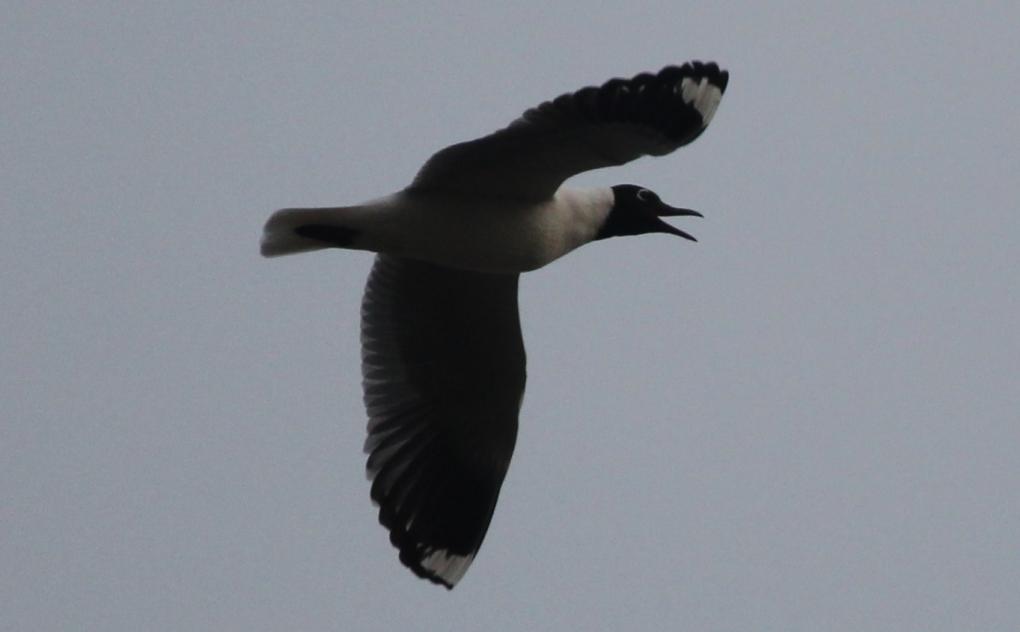 On the other hand, scrub-shrub habitat experience was frustrating. A lot of swooshing shadows of birds the size of a sparrow or smaller. Even a prepared list of most likely birds to see in the area didn’t help much. I couldn’t spot them and had to rely a lot on my hearing. The problem was I didn’t recognize the sounds I heard. The number of bird species I could identify in a scrub-shrub habitat was 9. There were a lot of flying insects and insect eating birds, like Blue and White Swallow. I even spotted a raptor (American Kestrel) sitting on the cables. I also managed to capture a couple of bush residents.
On the other hand, scrub-shrub habitat experience was frustrating. A lot of swooshing shadows of birds the size of a sparrow or smaller. Even a prepared list of most likely birds to see in the area didn’t help much. I couldn’t spot them and had to rely a lot on my hearing. The problem was I didn’t recognize the sounds I heard. The number of bird species I could identify in a scrub-shrub habitat was 9. There were a lot of flying insects and insect eating birds, like Blue and White Swallow. I even spotted a raptor (American Kestrel) sitting on the cables. I also managed to capture a couple of bush residents.
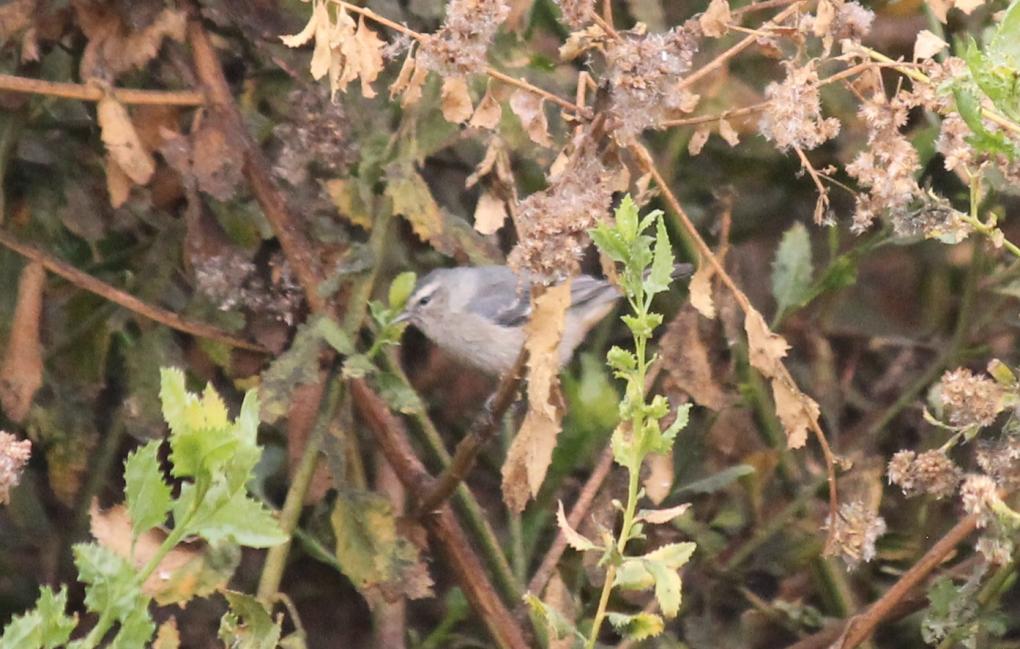 Sinereous Conebill
Sinereous Conebill
 Slender-Billed Finch
I need to do a better work on recognizing birds’ flight patterns and songs.
Activity 2:
I went as simple as ducks need lakes and woodpeckers need trees.
Down House: A big variety of Woodpeckers (woods or parks); Sevenoaks: Huge variety of Waterfowl (lakes).
Mt. Lemmon: Woodpeckers (woods or parks); Roger Road: Waterfowl (lakes).
Slender-Billed Finch
I need to do a better work on recognizing birds’ flight patterns and songs.
Activity 2:
I went as simple as ducks need lakes and woodpeckers need trees.
Down House: A big variety of Woodpeckers (woods or parks); Sevenoaks: Huge variety of Waterfowl (lakes).
Mt. Lemmon: Woodpeckers (woods or parks); Roger Road: Waterfowl (lakes). 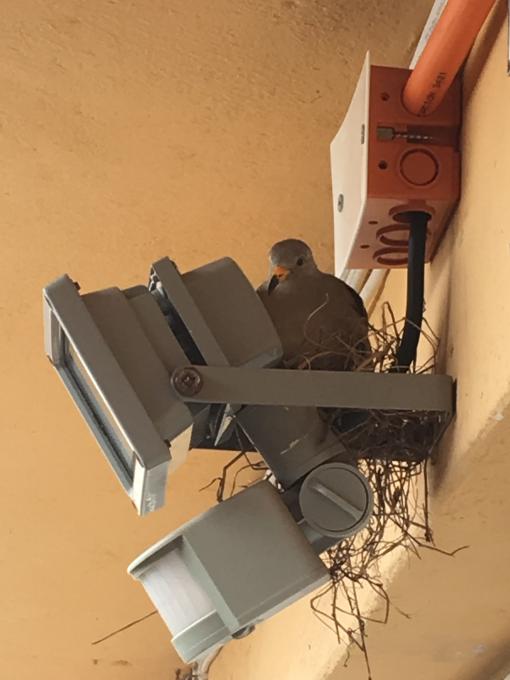 Some other Croaking Ground Doves or Quiguaguas as they are called here were taking dust baths.
All About Birds looks like a website that can provide a lot of information on birds. I’m considering getting a monthly or yearly subscription.
Activity 2: I was observing birds from the Cornell Lab Feeder Cam in Supsucker Woods. Common Grackles came in a group of 7 and sort of scared 2 Red-Winged Blackbirds and 2 Mourning Doves. But these guys came back. Unlike Grackles that ate altogether, Mourning Doves didn’t let the 3rd Dove land on the feeder. Grackles, Doves and Blackbirds stayed for a long time helping themselves with seeds. Blue Jays were more of solitary eaters: the second one came after the first one left. Red-Bellied and Downy Woodpeckers came at different times and left fast. They attached themselves vertically to a feeder that looked like a tree trunk. Grackles and Doves sat on trays and Blackbirds, Jays and a Northern Cardinal ate from perches. None of these birds would grab just one seed and leave.
Activity 3: The birds around my house are pretty much the same all the time: Turkey Vulture/Jote, Rock Pigeon/Paloma, Andean Gull/Gaviota, House Sparrow/Gorrion, Rufous-collared Sparrow/Chincol, Croaking Ground Dove/Tortolita Quiguagua, West Peruvian Dove/Kukuli and Oasis Hummingbird/Picaflor del Norte. So I can hear them daily, except Turkey Vulture and Rock Pigeon that are only visible to me from the far. (I never heard a sound from a Vulture). They prefer to stay on top of the apartments across the highway in front of our house. And I can only hear Sea Gulls, so I walked around to make sure that they were Andean Gulls picking on city garbage. According to Merlin bar charts, they are here all year round. About 2-3 years ago I started hearing a beautiful song of a Shiny Cowbird/Mirlo. Since then I can see groups of them outside on the trees and cables in the mornings when they come for food.
Some other Croaking Ground Doves or Quiguaguas as they are called here were taking dust baths.
All About Birds looks like a website that can provide a lot of information on birds. I’m considering getting a monthly or yearly subscription.
Activity 2: I was observing birds from the Cornell Lab Feeder Cam in Supsucker Woods. Common Grackles came in a group of 7 and sort of scared 2 Red-Winged Blackbirds and 2 Mourning Doves. But these guys came back. Unlike Grackles that ate altogether, Mourning Doves didn’t let the 3rd Dove land on the feeder. Grackles, Doves and Blackbirds stayed for a long time helping themselves with seeds. Blue Jays were more of solitary eaters: the second one came after the first one left. Red-Bellied and Downy Woodpeckers came at different times and left fast. They attached themselves vertically to a feeder that looked like a tree trunk. Grackles and Doves sat on trays and Blackbirds, Jays and a Northern Cardinal ate from perches. None of these birds would grab just one seed and leave.
Activity 3: The birds around my house are pretty much the same all the time: Turkey Vulture/Jote, Rock Pigeon/Paloma, Andean Gull/Gaviota, House Sparrow/Gorrion, Rufous-collared Sparrow/Chincol, Croaking Ground Dove/Tortolita Quiguagua, West Peruvian Dove/Kukuli and Oasis Hummingbird/Picaflor del Norte. So I can hear them daily, except Turkey Vulture and Rock Pigeon that are only visible to me from the far. (I never heard a sound from a Vulture). They prefer to stay on top of the apartments across the highway in front of our house. And I can only hear Sea Gulls, so I walked around to make sure that they were Andean Gulls picking on city garbage. According to Merlin bar charts, they are here all year round. About 2-3 years ago I started hearing a beautiful song of a Shiny Cowbird/Mirlo. Since then I can see groups of them outside on the trees and cables in the mornings when they come for food.
